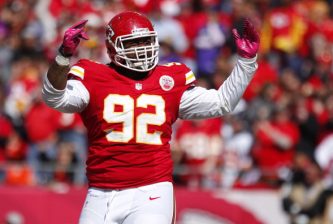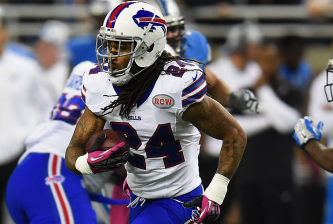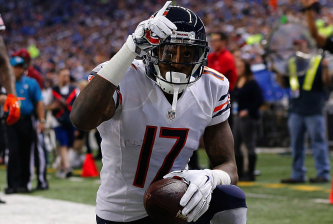Not long ago, the NFC West was a raging, toxic dumpster fire. Or at least it wasn’t long ago in human years.
By the standard calendar that tracks the passage of time, four years is a short period. It’s long enough, I suppose, as that’s equal to the length of a presidential term, or the lifespan of your kid’s goldfish. But in the grand scheme of our existence, it’s nothing.
The NFL speeds up the ticking of time. That’s how it feels, as in one full year — complete with all the player transactions, coach shuffling, and scheme changes — rosters morph and systems are swapped as the game evolves rapidly. Nowhere is that more evident right now than in the NFC West.
That division is home to the defending champions, two of the best young quarterbacks in the NFL, three dominant defenses, and four pass rushes that induce immediate pants urination. The past three NFC championship games have each featured the San Francisco 49ers, and the Seattle Seahawks this year when the two teams met.
The dominance of the division extends so deep that three of the four teams won at least 10 games in 2013, with the Arizona Cardinals cruelly missing the playoffs. Taking that further, the St. Louis Rams somehow still managed to win seven games — finishing one win below an even .500 — despite being without Sam Bradford for most of the season.
Back to that exploding toxic dumpster fire in 2010. How did the NFC West look then? The Seahawks took it at 7-9, needing a tiebreaker to finish ahead of the Rams. Seattle became only the second team in league history to qualify for the playoffs with a losing record.
Nowhere is the warp speed of the NFL more evident. How did this happen? Well…
It started with great drafting
I don’t care how much of a scouting mastermind you are, there’s always a crapshoot element to the draft. Every general manager has major whiffs, but the key is minimizing those bust land mines and finding gems late.
Look at the Seahawks’ vaunted defense. Richard Sherman and Kam Chancellor were both fifth-round picks, Byron Maxwell came off the board in the sixth round, K.J. Wright was a fourth rounder, and Brandon Mebane was selected in the third round. That’s five key defensive cogs (and two Pro Bowlers) who occupied draft real estate far removed from the first round.
Around the division there was also a willingness to take a calculated character gamble, and it’s paid off with Janoris Jenkins and Tyrann Mathieu.
Then in the first round, picks were nailed. When he’s not being an unhinged wreck off the field, Aldon Smith is one of the league’s best edge rushers, with 42 sacks in 43 career regular-season games. He was well worth the 49ers’ seventh overall pick in 2011, as was Earl Thomas at 14th overall for the Seahawks in 2010. He’s quickly blossomed into a premier safety, and has recorded 32 passes defensed and 15 interceptions over four seasons.
There’s also Robert Quinn in St. Louis, a first rounder who finished second with 19 sacks in 2013, and Patrick Peterson, a shut down All Pro cornerback and explosive return man. He has 42 passes defensed in only three seasons.
Cheap, young quarterbacks helped too
Colin Kaepernick has been paid now with a long-term deal that really isn’t a long-term deal. But for two years the 49ers rode a starting quarterback who was being paid the NFL equivalent of a can of sardines as a second-round pick.
That gave San Fran the luxury of retaining other key pieces, a cushy lifestyle the Seahawks are still enjoying now with Russell Wilson, a third-round pick in 2012.
And so did new coaching leadership, and offensive philosophies
Pete Carroll fled his smouldering mess at USC in 2010, heading north to Seattle where his enthusiasm and unlimited energy fit just right with the loudest stadium in the league. More importantly, his offensive mind worked its wizardry, posting a 24-8 record since 2012.
Jim Harbaugh and his fierce, red sharpie scowling swagger took over a 49ers team that hadn’t finished above .500 in eight years prior to his arrival in 2011. They’ve been to three straight conference championship games since, while winning 36 games and appearing in a Super Bowl.
In Arizona, Bruce Arians has brought his vertical offense to a team with plenty of weapons to support it, and Jeff Fisher isn’t Steve Spagnuolo, which is more than enough.




